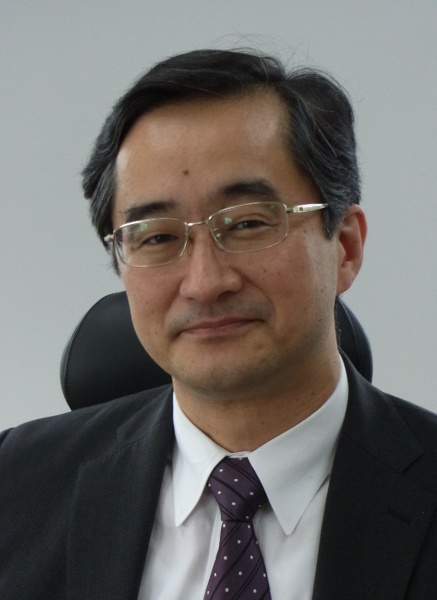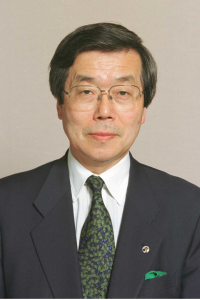Japan’s Response to the TPP in Question: Preventing a Slowdown of World Trade and Investment
< Key Points >
- * Behind the abandonment of a general framework agreement were the disputes between Japan and the United States
- * Liberalization rate of about 97%-98% will be needed to reach an agreement
- * Japan-U.S. summit meeting in April 2014 will be the last remaining hope for achieving the TPP

URATA Shujiro, Professor, Waseda University / Faculty Fellow, RIETI
The Ministerial Meeting of the Trans-Pacific Partnership (TPP) negotiations, held on February 22-25, 2014 in Singapore, postponed a decision, having given up on reaching a general framework agreement. The failure of negotiations to come to an agreement follows a similar outcome from the Ministerial Meeting in December 2013. Negotiations are expected to continue, but the fact that no date has been set for the next round is among the reasons why the process seems to have stagnated. As it is, the negotiations quite possibly could lose momentum and begin drifting, much like the Doha Round of talks for multilateral trade liberalization under the World Trade Organization (WTO).
Behind the abandonment of a general framework agreement were the disputes between developed nations such as the United States and emerging countries such as Malaysia and Vietnam. The disagreements included issues such as the protection of intellectual property rights, preferential treatment for state-owned enterprises, and environmental regulations. The greatest obstacle, however, was the conflict over tariffs between Japan and the United States, who, by far, have the largest economies of the 12 nations involved in the talks.
♦ ♦ ♦
Japan opposed the United States’ call for eliminating tariffs on all agricultural products. For its part, the United States was against two of Japan’s demands: to clarify when automobile tariffs would be eliminated and to eliminate tariffs on auto parts. Within each of the two nations, the corresponding industries oppose liberalization, and there are politicians who get their support from these industries. These are key factors in each country’s resistance to the demands of the other. This column reconfirms the importance of the TPP and considers policies that Japan should take to reach agreement.
Singapore, New Zealand, Chile, and Brunei—four members of the Asia-Pacific Economic Cooperation (APEC)—established the TPP in 2006. Known originally as the P4, it was a free trade agreement (FTA) designed to liberalize trade among the member states. Of particular note, the United States, Australia, Peru, and Vietnam joined in 2010, signaling the start of negotiations for an expanded TPP.
Malaysia, Canada, Mexico, and Japan subsequently entered the talks. It is very unusual for the number of negotiating countries to expand during the process of working out an FTA. The fact that this happened is evidence that many nations recognize the importance of taking part in the TPP. The ultimate objective of the TPP is a Free Trade Area of the Asia-Pacific (FTAAP) that includes APEC members.
The TPP aims to establish not only a very open market, but also rules for a free and fair market that would be transparent and stable. Thus, it would be a comprehensive FTA seeking to achieve economic growth in the Asia-Pacific region and throughout the world. The nations of the Asia-Pacific region have expanded trade and investment successfully by liberalizing them and opening their markets, thereby achieving high rates of growth.
On the other hand, in some areas, there are still trade and investment barriers in the developed nations, including Japan and the United States. Also, emerging markets such as China and Vietnam are rising in importance, and, in many areas, these not only still have some high trade and investment barriers, but also do not have fully developed market rules. Forming the TPP and thereby resolving these issues would help the Asia-Pacific region enjoy further economic growth by making two things possible: effective use of labor and capital and efficient management of supply chain-centered activities by enterprises.
♦ ♦ ♦
The details of the TPP are as yet undecided as they are still under negotiation, but the following are expected to be part of the agreement: in the goods trade, elimination of tariffs on agricultural and industrial products; in the service sector, liberalization of trade and investment, rule-making in areas where the WTO does not provide adequate rules (e.g., intellectual property rights, competition policies, labor, environment), and devising an approach to cross-sectional problems of regulatory policy impacting trade and investment.
As this list reveals, it is highly possible that the TPP will cover a wide range of trade policies, from the traditional (i.e., liberalization of the goods trade) to “21st century” policies, and could become the most advanced trading system on the planet. The 2012 gross domestic product (GDP) of the 12 nations involved in the TPP talks equaled about 38% of the world total. If the TPP were to expand into the FTAAP, however, the ratio would be 57%, so the TPP could grow into a global trading system.
With the Doha Round making no progress, nations with the same ideas about trade liberalization have formed many FTAs amongst themselves, helping to expand trade and investment.
Until now, most FTAs have been bilateral or plurilateral agreements, but the start of TPP negotiations and the subsequent entry of Japan to the talks have inspired negotiations for new mega FTAs. These include the Regional Comprehensive Economic Partnership (RCEP) with 16 countries (the members of the Association of Southeast Asian Nations (ASEAN) plus Japan, China, Korea, India, Australia, and New Zealand); the Transatlantic Trade and Investment Partnership (TTIP) with the European Union (EU) and the United States; and an FTA between Japan and the EU.
These mega FTA negotiations are keeping the trend of world trade and investment policy liberalization alive, but if the TPP negotiations stumble, this could quite possibly cause other mega FTA talks to lose speed and make world trade and investment stagnate.
The second administration of Prime Minister Abe Shinzo installed after the 2012 election, has implemented the “three arrows” of Abenomics: aggressive monetary easing, agile fiscal stimulus, and a growth strategy. The releasing of the first two arrows has caused stock prices to rise and the yen to fall, helping the Japanese economy to recover. However, the pace of recovery has fallen since, in part because of the slowdown in the world economy.
Japan faces some serious problems, including massive government debt while the population is aging and its birthrate remains low. Revitalizing the nation’s economy requires the third arrow, a growth strategy that has the TPP and structural reform at its core. For its part, the Barack Obama administration in the United States sees the TPP as an important policy for increasing exports and thereby boosting employment.
♦ ♦ ♦
Professor Peter Petri of Brandeis University used an economic model to simulate the effect of the TPP. His results indicate that the TPP, if enforced, would raise the GDP in Japan and the United States by 2.0% and 0.4%, respectively (see table). In addition, enforcement of the FTAAP would raise their respective GDPs by 4.3% and 1.3%. For comparison, the TPP and FTAAP would boost the world GDP by 0.2% and 1.9%, respectively.
If Japan and the United States were to recognize the importance of the TPP not just to themselves but also to the Asia-Pacific region and indeed the world economy, they could understand easily how critical it is for them to compromise so that an agreement can be reached.
For the United States, the obstacle to agreement is resistance to eliminating automobile tariffs. For Japan, it is the opposition to liberalizing the market for agricultural products. Japan specifically resists liberalizing five “sacred” categories: rice, wheat, beef and pork, dairy products, and sugar. If these five items were excluded from tariff elimination, 93.5% of goods would be liberalized.
| TPP | RCEP | FTAAP | |
|---|---|---|---|
| 12 Pacific Rim countries including the United States and Japan | 16 countries including ASEAN+3 | 21 economies participating in APEC | |
| Japan | 1.96% | 1.79% | 4.27% |
| United States | 0.38% | 0.00% | 1.31% |
| World | 0.22% | 0.62% | 1.86% |
Source: Estimation by Professor Peter Petri
The TPP aims to liberalize 100% of goods, but most negotiating states would find 100% liberalization difficult because of their political and economic situations. Still, most of the FTAs put in force by developed nations taking part in the TPP talks (other than Japan) have reached liberalization rates of about 98% or higher. In light of that, Japan will have to liberalize about 97%-98% of its market to reach an agreement.
This is a very high standard for Japan, which has never reached even 90% liberalization in any FTA currently in force. Nonetheless, it could follow policies such as gradually reducing tariffs and providing temporary compensation for production declines and unemployment. Strengthening competitiveness through structural reform is crucial for liberalization to advance. We must not forget that liberalization of agricultural products would lower food prices, which would be a great benefit for consumers in Japan, where incomes are not rising. It especially would help low-income citizens.
Considering the timing of the next midterm elections in the United States (November 2014), the last remaining hope for achieving the TPP soon would be a general framework agreement during Prime Minister Abe’s summit with U.S. President Barack Obama, scheduled for April 2014. To reach an agreement, the two heads of state have much to do prior to their meeting: showing political leadership, they will have to explain simply to their citizens about the importance and necessity of the TPP, persuade the opposition within their own countries, and give appropriate instructions to their negotiating teams to reach agreement.
Source: “TPP Towareru Nihon II: Sekai Boueki, Toshi no:Teimei Fusege (Japan’s Response to the TPP in Question II: Preventing a slowdown of world trade and investment),” Nihon Keizai Shimbun, p. 33 March 21, 2014 (Courtesy of Nihon Keizai Shimbunsha) [March 2014]
Translation done by the Research Institute of Economy, Trade and Industry (RIETI)*. Key points added with permission, to reflect the original presentation, by Discuss Japan.




